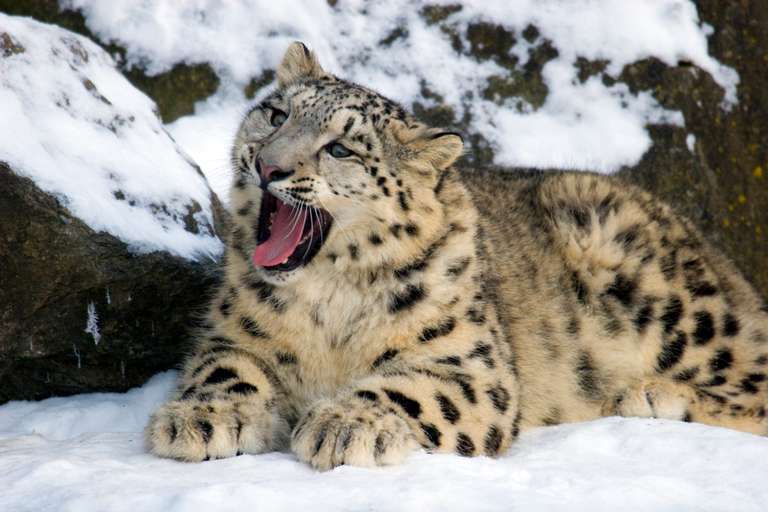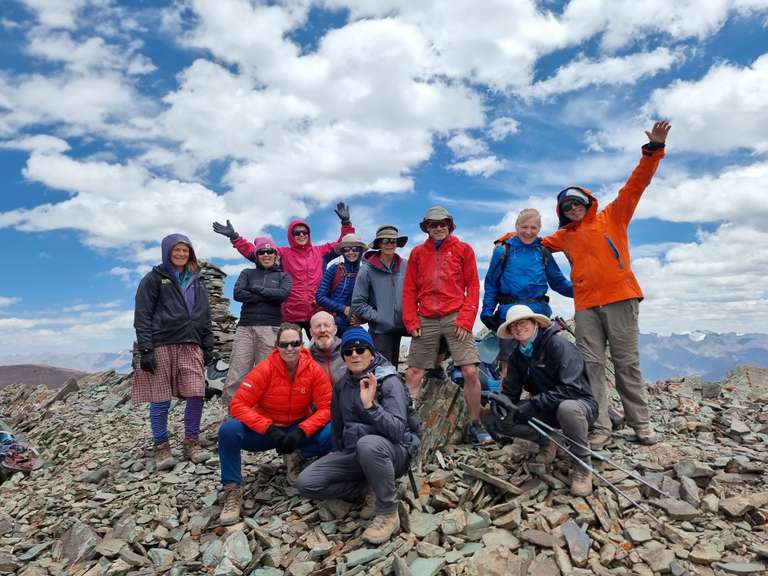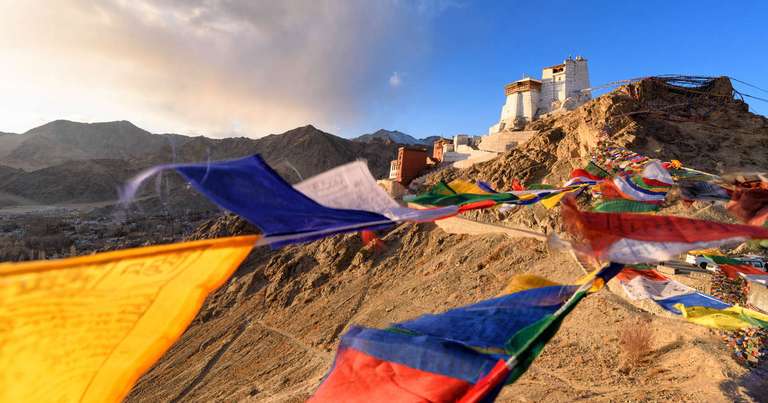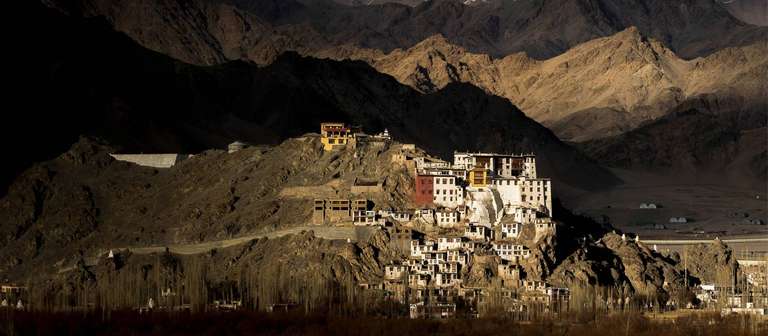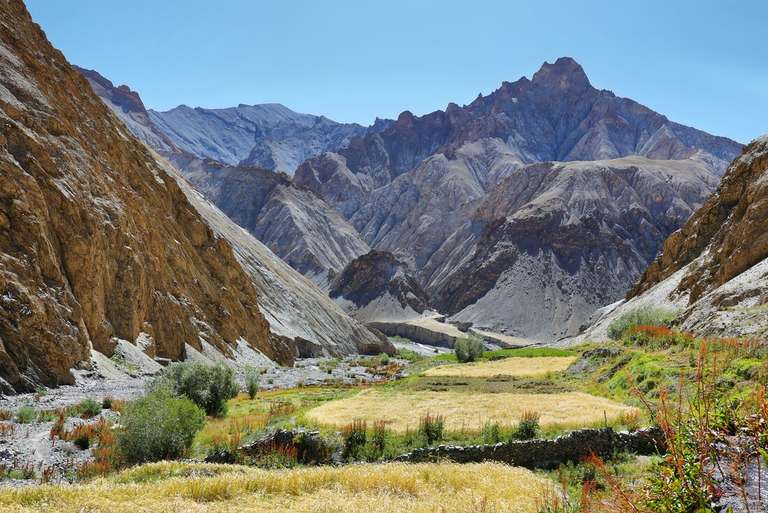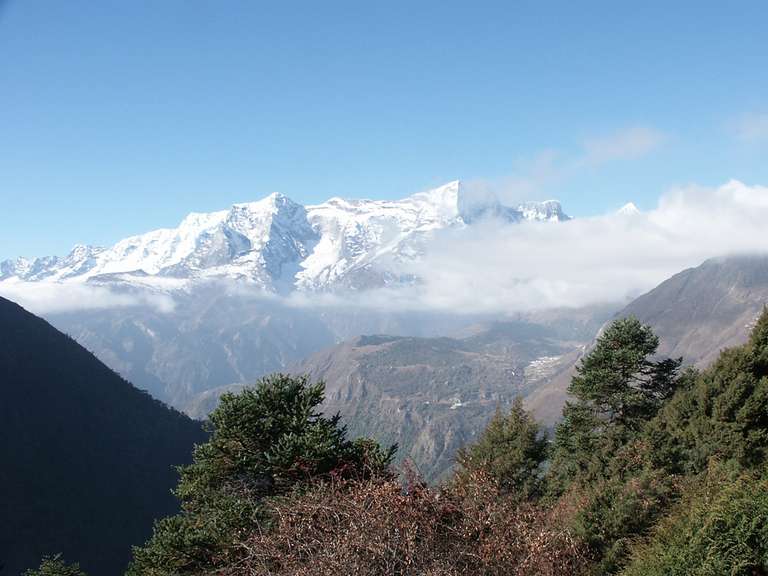A Guide to Ladakh: For First-time Travelers

- Natalia
- From Russia
- Natalia
- From Russia
- natasa
- From Belarus
- Anna
- From Belarus
At a glance
| Where is Ladakh: | Set in the Trans-Himalayan region within the northernmost Indian state of Jammu and Kashmir, Ladakh borders with Tibet to the east |
| Total area: | 87,000 km2 |
| Population: | 274,000 |
| Nearest airport: | Leh Airport |
| Best time to visit: | Best time to visit is mid-May to October, when the camps, hotels and restaurants awaken from their winter slumber and the roads are passable. Heavy snowfall between November to May renders most of Ladakh roads and passes inaccessible. August to September is a rainy season, so special caution should be paid to the risk of landslides. |
Highlights
- Visitors to Ladakh are treated to omnipresent dramatic landscapes with magnetic views.
- Ladakh is a region hosting many of the world’s highest motorable road passes, making it an ideal territory for motorbike enthusiasts and adventure seekers.
- The Tibetan heritage is amply evidenced by multitude of picture-perfect terraced monasteries and abundance of ancient Buddhist art.
- Ladakh’s arid landscape is endowed with natural diversity, making it an ideal environment for plethora of adventure activities suitable for all levels.
Lowlights
- The high altitude across the region requires careful acclimatisation, followed by a rigorous drinking regime to avoid dehydration.
- Access to Ladakh and pass-ability of all land transportation is heavily dependent on weather conditions.
Top 10 things to do and see in Ladakh
The Ladakh region is a desolate expanse of diverse land offering an unforgettable experience to those who dare to dream. An experience that expands far beyond the thrilling endurance of harsh climatic conditions in one of India’s hidden gems.
1. Visit the Royal Leh Palace: Notwithstanding its un-kept and partially dilapidated state, the royal palace is an imposing structure dominating the Leh landscape. Set high up on a hill, it is a reminder of Leh’s royal past, without the commanding opulence and grandeur of most India’s palaces.

Following the damaging conquests of the palace in the 19th century, which contributed to its abandonment by the royal family, the Leh palace is an arresting example of Tibetan secular architecture. Now largely in ruins and devoid of signage and guides, it welcomes you to re-discover its fascinating past.
- Good to know: Opens every day between 8:00 – 17:00. Bring a flashlight for better visibility in some of the darker rooms and corridors.
2. Enjoy the shimmering waters of Pangong Tso: The spectacular lake set high on the Changtan plateau bordering Tibet is one of the most popular spots in Ladakh. Made even more popular by Bollywood movies, it is an essential stop for every self-respecting instagrammer. And while the lake itself is spellbinding, with a stunning backdrop of sharp mountains, the journey to get there is equally mesmerising.

- Good to know: The journey from Leh can take 4 – 5 hours one way so, use this camping opportunity to truly enjoy the lake’s breathtaking sunsets and sunrises
- Fun fact: Despite the high altitude, exceeding 4,300 m, the lake remains liquid due to high salinity.
3. Explore Nubra Valley: Located in the north-east of Ladakh, Nubra Valley offers multitude of experiences. Sand dunes reminiscent of those in Arabian deserts can be conquered on two-humped camels or in jeeps. Quad bike rentals dotted around the valley entice those preferring to be in the driver seat. Or you can simply trek through, paying visits to one of the villages. And if history and culture is your poison, visit Nubra’s most historic monument, the picture-perfect Diskit monastery.

- Good to know: When traveling from Leh, it is necessary to make an overnight stay.
4. Drive through some of the world’s highest motorable mountain passes: Whilst mountain passes might not be the typical tourist draw, the thrilling journey to get there and back certainly is. Ladakh prides itself on hosting some of the world’s highest motorable mountain passes and no adventure enthusiast should pass this opportunity for an adrenaline top-up.
The Kardung La pass at 5,359 m is a gateway to the Nubra Valley and one of the most riveting passes to ride on. Chang La at 5,360 m is only slightly lower and equally challenging way to reach the picturesque Pangong Tso.
- Good to know: Proficient motorbike riding and driving skills are required to self-drive through these routes.
5. Marvel at the ancient monasteries: Inhabited mainly by people of Tibetan descent, ancient Buddhist monasteries and monks clad in maroon robes are an inseparable part of the Ladakh fabric. Whilst Ladakh hosts bounty of picture-perfect monasteries, some truly stand out as warranting a visit.

The hill-side terraced splendour and unmissable charm of Diskit, Likir, Hemis, Spituk and Thiksey monasteries will challenge you to put away your camera. Each one is part of the living tradition of Ladakh and each will leave you spellbound with their unique decorations and structures.
- Good to know: With the exception of Diskit, all monasteries can be visited in a day trip from Leh. Refrain from taking photos during prayers to avoid causing disruption and when sitting down, make sure your feet do not point at Buddha, another person or a religious object.
6. Raft the rivers: River rafting might not be the first thing that comes to mind when you think about Ladakh but it is one you should certainly consider. Moving down the untamed Indus and Zaskar rivers offers a uniquely intense experience of this desert landscape. And with rapids ranging mainly from grades I to III, it is an experience that can be enjoyed by many.

The Indus river section Phey to Nimmo is popular for its dramatic vistas and rapids that can be conquered by relative beginners. If your level is more experienced, aim for the Chilling to Nimmo section on the Zanskar River. Nimmo is the point of confluence of the two rivers and a place of captivating natural beauty as the two shades of water meet.
- Good to know: June to August when the water is still high is the best season for rafting in Ladakh.
7. Be a part of a festival: Baring a witness to monastic festival is an unforgettable experience and one worth timing your trip for. The vibrant and colorful affairs of Buddhist festivals centre on the celebration of life with ceremonies fending off evil spirits. Each festival is further celebrated in honor of the monastery founders.
The masked festival of Hemis Tsechu, festival of oracles Matho Nagrang, the widespread Dosmochey festival celebrated at Likir, Diksit and Leh monasteries and the popular Chemrey Angchok that climaxes by a rowdy masked procession moving through the main market in Leh are just some festivals to consider.
- Good to know: Timing of each festival is governed by the Tibetan calendar so check the exact timing for the specific year you wish to go.
8. Defy gravity at the Magnetic Hill: The lure of the Magnetic Hill, unlike the rest of Ladakh, doesn’t lie in its overt beauty. It is the fascination that attracts the curious mind that has put this landmark on the map. Situated on the Leh – Kargil highway, the Magnetic Hill has become a popular spot with those seeking to witness an unusual phenomenon.
Is it a superstition, a force of gravity or an optical illusion that makes stationary objects appear to move uphill? Whatever your belief, there is only one way to find out. Park your vehicle in the yellow box on the road and see what happens.
- Good to know: Best time to visit is July to September when the roads are clear, and the weather is good.
9. Brave the roads by motorbike: Ladakh literally means ‘the land of high passes’, and as such makes a frequent addition to the bucket list of many fervent bikers. There is something to be said about conquering the inhospitable dramatic landscape of Ladakh on two wheels, with nothing standing between you, the torturous road and the inhospitable yet magnetic landscape.

Negotiating the unruly roads surrounded by towering massifs one minute and vast expanse of lush plateaus another minute is an enchanting experience you will cherish forever.
- Good to know: Despite ongoing improvements, the road conditions in Ladakh are suitable only for experienced bikers.
10. Trek through the region: Trekking in Ladakh is a thrilling experience attracting adventurers from all over the world. It is easy to feel at one with nature, moving through narrow passes, crossing deep valleys, traversing rope bridges and admiring the glistening snow-clad peaks.
The traditional way of living in symbiosis with nature is still practiced in the remote villages that haven’t lost anything of their traditional charm. It is interacting with the always hospitable locals that really reaches deep into one’s soul and leaves everlasting memories.

- Good to know: Despite its challenging topography, Ladakh is criss-crossed by stunning trails suitable for all levels of experience and fitness. Make sure to take into account the high altitude that makes trekking more demanding.
How to get there
Leh is the largest town in the region and a practical base for exploring Ladakh.
- Flying to Leh: Flying to Leh is relatively inexpensive and by far the most convenient way to reach Ladakh. Direct domestic flights go from major cities including Delhi, Jammu, Srinagar and Mumbai. Visitors from other cities and international travelers need to transfer at one of these airports.
- Traveling overland: Depending on the time constraints and zest for adventure, there are two highways connecting the outside world with Leh, negotiable by motorbike and a car. One from Srinagar and one from Manali. The Manali to Leh road in particular is popular for its unbinding views and sightseeing opportunities. Taking a bus from Srinagar and Manali to Leh is another option, albeit a very bumpy one. There is even a direct bus from Delhi to Leh covering incredible 1,203 km for those who are up for it.
Permits for Ladakh
An increasing number of sites in Ladakh is now open to domestic and international visitors alike, although some still require special permits to be organised prior to entry.
For seamless travel experience, it is advisable to check closer to your departure date to get the most up-to-date requirements.
- Indian nationals: Indian nationals require an Inner Line Permit to travel to restricted areas. It is valid for 3 weeks and entitles the holder to multiple entry.
- Foreign nationals: The Inner Line Permit required for foreigners is called the Protected Area Permit, and is valid for 7 days since the date of issue. It allows foreigner visitors to access restricted areas including Pangong Tso, Nubra Valley, Khardung La, the Hanu Villages and few others.
- How to apply: The permits can be obtained online or less conveniently from the office of the Deputy Commissioner in Leh. To avoid unnecessary hassle and delays, enlisting the help of friendly hotel receptionist or a travel agent is an attractive option.
How to get around Ladakh
Depending on the budget and adventure spirit, visitors to Ladakh have a couple of options to get around.
- By motorbike: Leh has several motorbike rental outlets. Whilst bookings can be done over the phone, it is much better to visit the shops and check the motorbike conditions first.
- By car: Driving to Leh in own vehicle is an option if you are coming on the Srinagar or Manali highways. An alternative is to hire a car with a driver once in Leh and explore the region from there.
- By a shared taxi: Tourist and public shared taxis can be particularly appealing for those traveling solo and on a string budget. Check out notice boards in cafes, restaurants and shops or ask a friendly local for a public shared taxi.
- By bus: Buses are by far the least budget offensive transport in Ladakh, although not all locations are serviced, and most routes only run on certain days.
Accommodation
With the exception of overnight trips to Nubra Valley and Pangong Tso and longer trekking excursions, most people will base themselves in Leh and explore Ladakh from there. Here are some accommodation options to consider.
1. Mentokling Guesthouse
This rustic guesthouse is ideal for those on a tight budget who do not wish to compromise on quality. Located conveniently close to the main bazar, the guesthouse offers serene views of the iconic Leh Palace and dramatic mountains. The hosts are famous for their hospitality and when the time comes, the resident restaurant promises to hit the spot.
2. Shambhala Resort
If you like to get far away from the crowds and up, close and personal with nature, then Hotel Shambhala is a must. Nestled amidst the verdant landscape of the Leh countryside, it is the perfect retreat with ample space and plenty of opportunities to relax in one of the hammocks in the garden.
3. The Grand Dragon Ladakh
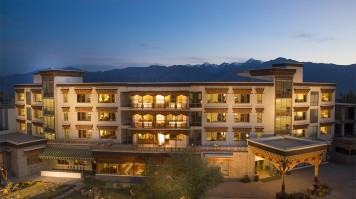
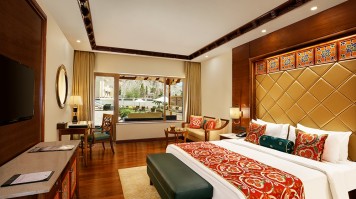
This is as close to luxury as it comes in Leh. The Grand Dragon boasts charming spacious rooms complimented by array of modern facilities all wrapped in a top-class service. Located at a vantage point, it offers splendid views of the surrounding mountains and an excellent terrace restaurant ideal for enjoying sunsets.
Ladakh is a jewel in the northern most part of India, distinct by its dramatic natural beauty and abundance of adventure activities promising to satisfy all kinds of travelers. Once a remote mystical region visited only by the most intrepid of travelers, it is now increasingly popular with visitors from all backgrounds and walks of life. Whatever the interest, appetite for adventure, available time, travel preference and budget, Ladakh has something for everyone.



